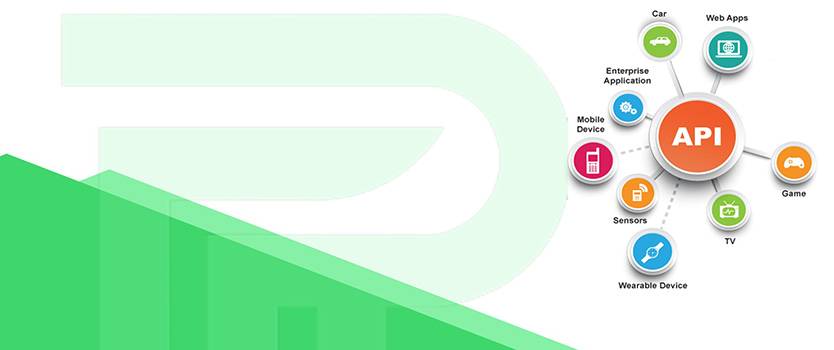Today we use mobile applications for everything, whether it is watching a video, booking a cab, or ordering food from the restaurant.
The answer is – RESTful Web Services
What is REST?
REST is the Representational State Transfer, more importantly, it is an architectural style or an approach for communication between the client and your server.
Sometimes it is also known as the Language of
In simple words,
A client-side server cannot communicate directly with a web server, so they need a communication bridge to talk to servers.
That communication bridge is known as API (Application Programming Interface), which connect your client with the server via HTTP Protocol using REST Principles, and a bunch of this process is known as RESTful Web
Why Should We Use RESTful Web Services?
The main reason, which encourages you to use REST is: Separation of Client and Server
Separation of Client and Server: REST APIs can separate your User Interface(UI) with your data storage which improves your loading time.
Scalability: Due to the separation of client and server, your development team can easily scale your project without any problems.
Stateless: REST APIs are stateless, so there is no dependency on any other calls
Cache: Due to stateless nature, overhead on API calls can occur, that’s why REST encourage you to write cacheable APIs
No installation: You don’t need to install anything on client-side to use REST API
Flexible formats: REST Provides you the ease of format flexibility for both Options: JSON or XML
Ease of Use: It’s easy to learn due to its uniform interface

Conclusion
REST is just a set of standards for your API designs. Following these standards improves your API design and makes it up to the industry standards. Any developer who knows how to use REST can scale and work on APIs.
This is just an introductory explanation about REST. Stay connected to know how we can implement REST and the best practices of REST API Designs in the next blog posts.
Written By
Author's Picks
- A Simple Guide to API Development for Developers
- 24/03/2025
- REST APIs Best Practices
- 18/09/2019
Categories
- AI for Startups
- AI in Web Development
- AI Integration
- AI Platforms
- AI Prompt
- AI Tools
- AI Trading Software
- Android App
- Android vs iOS Development
- Angular
- API
- API Development
- App
- app development
- App Idea
- App User Feedback
- Application
- Artificial Intelligence
- Audit Services
- Automotive Industry
- Awards and Recognition
- Business Consulting
- Business Website
- Chatbots
- CRM
- CRM for Financial Advisors
- Custom CRM
- Custom SaaS
- Custom Website
- Customer Service
- dashboard design
- Developing a Mobile App
- Digital Business
- E-commerce
- EMR Integration
- Finance
- Financial Advisors
- Financial Advisors
- GIT
- Health Insurance
- iOS App
- iOS App Development
- IoT Mobile App Development
- IoT Platforms
- IT Audit Services
- IT Consulting
- IT Strategies
- Java Development
- Laravel
- Lean Canvas
- Learning Management System
- Logistics Apps
- Mobile App Development
- MVP
- Native App
- News Aggregator Site
- OTT
- Outsourcing IT
- Payment Gateway
- predictive analysis
- Product Launch Strategy
- Progressive Web App (PWA)
- Prototype
- Recommender Systems
- Ruby
- SaaS
- SaaS Application
- SaaS Business
- SaaS Company
- SaaS Development
- SaaS Product
- SaaS Project
- Sales Funnel
- SEO
- Shopping Cart
- Software Development
- SSL and TLS
- Startup Checklist
- Technology
- Tetradic Color Scheme
- UI/UX Design Company
- Unit Testing
- User Flow
- User Testing
- Web Development
- Web Performance Optimization
- website Maintenance Services
- Website Migration Service
- Website Speed Optimization
- WooCommerce
- WordPress





